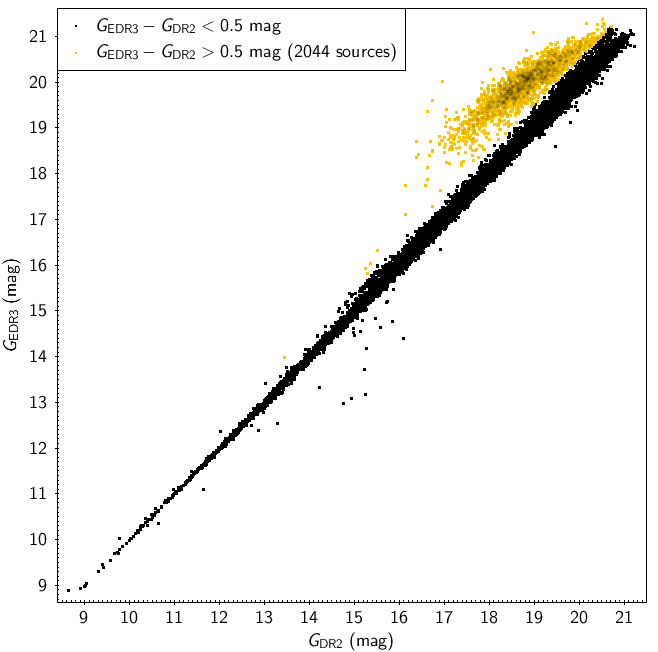8.6 Time series and variability
Author(s): Tatiana Muraveva
Comparison between mean magnitudes provided in the Gaia DR2 and Gaia EDR3 catalogues for a sample of 140,635 sources classified as RR Lyrae stars in Gaia DR2, for which both estimates of the mean magnitude are available, shows that there is a difference in magnitudes more than 0.5 mag for 2044 stars, with the Gaia EDR3 magnitudes being fainter. The Gaia EDR3 mean magnitudes plotted versus the Gaia DR2 magnitudes for 140,635 candidate RR Lyrae stars are shown in Figure 8.29, where yellow and black points represent sources which have difference in magnitudes more and less than 0.5 mag, respectively. The figure shows that there is a good agreement for a vast majority of stars, even though for 2044 sources shown with yellow points there is a systematic shift in magnitudes, with the Gaia EDR3 magnitudes being fainter. Among these 2044 sources, 908 are listed by Clementini et al. (2019) in their Table C1 as known galaxies misclassified as RR Lyrae stars in Gaia DR2. Furthermore, more detailed analysis of the 2044 sources performed with a dedicated pipeline shows that the vast majority of these sources are extended objects.
